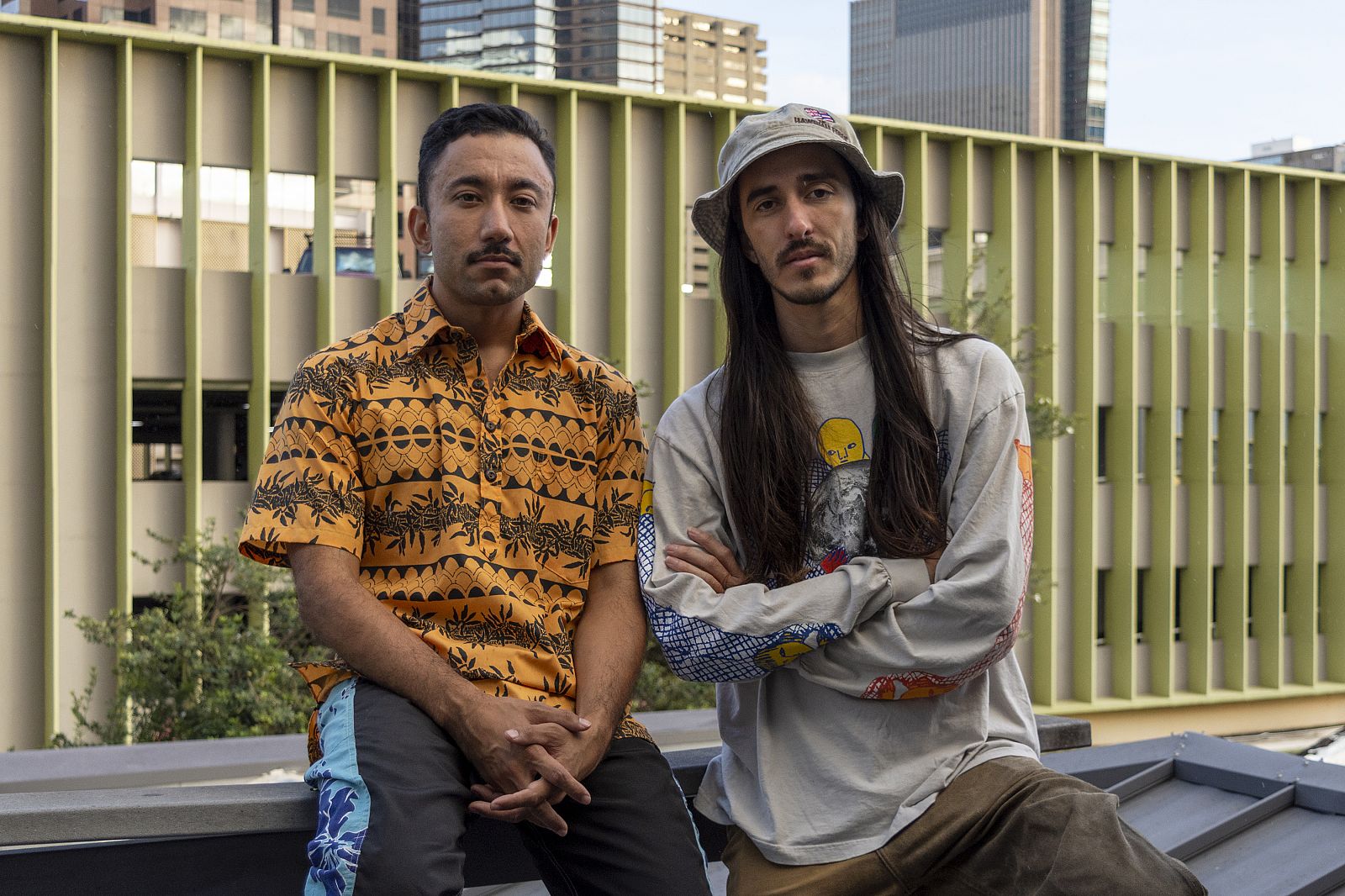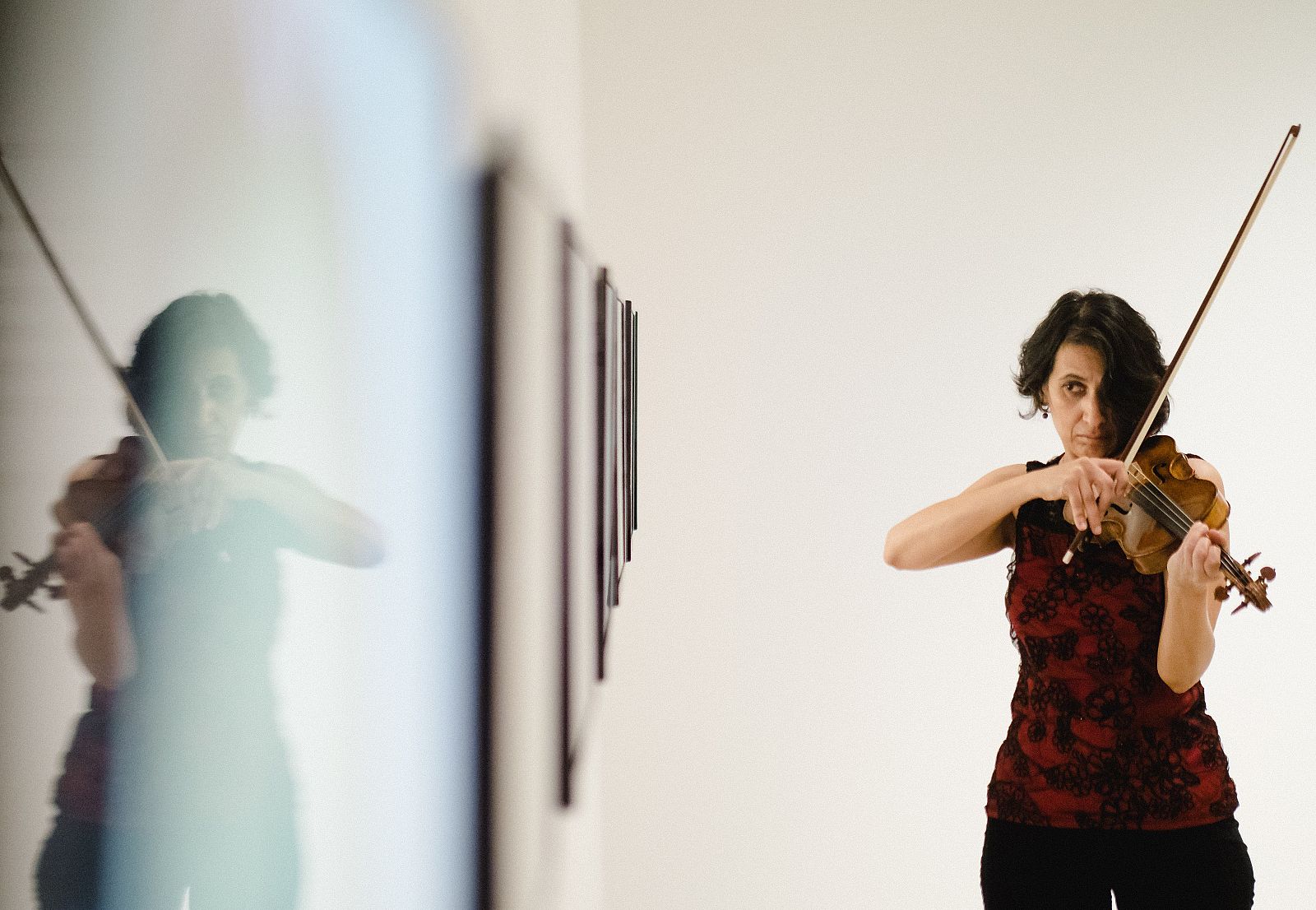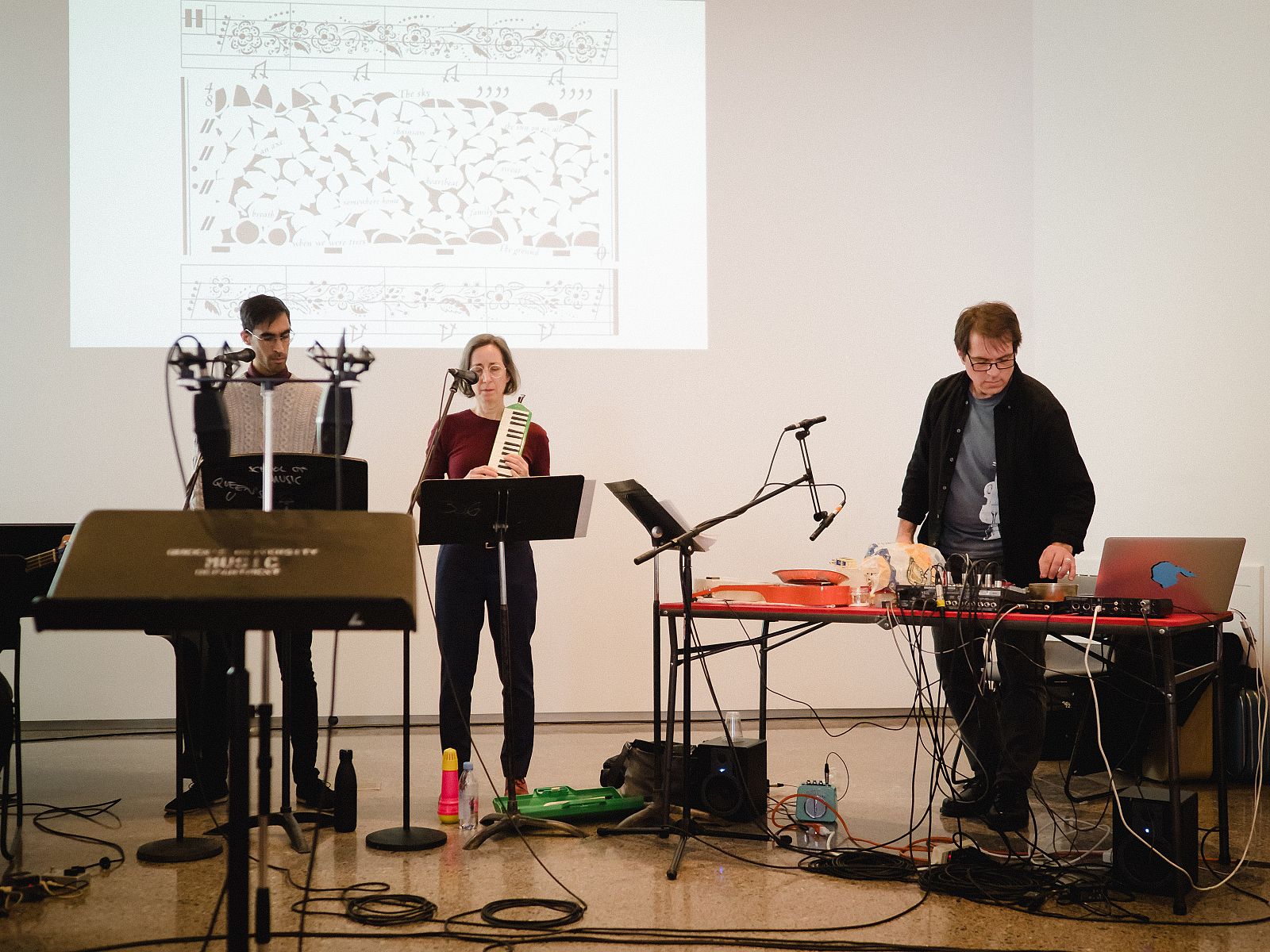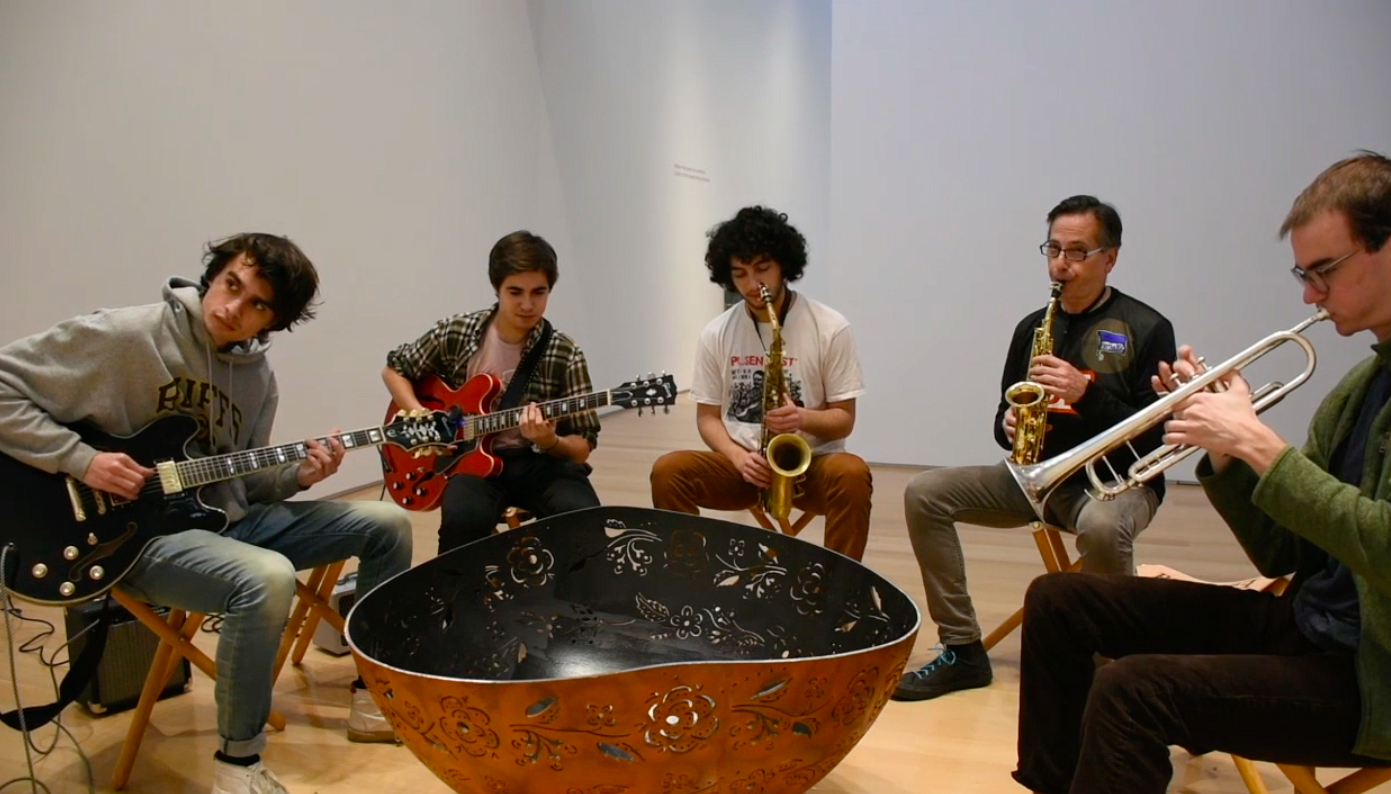Margaret Jacobs: 2023 Curatorial Research Fellow
Echoes and Shifts opened on June 13 and 14 and runs through August 23, 2024 at Positive Street Art and the Manchester Chamber Gallery in Nashua and Manchester, New Hampshire. The exhibiting artists are: Erin Lee Antonak (Oneida), Katrina Brown Akootchook (Oneida Nations of the Thames), Ansley Hill (Akwesasne Mohawk), Carrie Hill (Akwesasne Mohawk), Margaret Jacobs (Akwesasne Mohawk), George Longfish (Seneca/Tuscarora), Niio Perkins (Akwesasne Mohawk), Roger Sosakete Perkins (Akwesasne Mohawk), Marjorie Kaniehtonkie Skidders (Akwesasne Mohawk) and Kaiahtenhtas Thompson (Akwesasne Mohawk).
Kinship Threads
My proposal for my 2023 ICI Fellowship research was broad—my intent was to research and create an exhibition of work by Indigenous artists that explores the meaning of kinship through ways of mentorship, familial connection, and collaborative art practice. As an artist, educator, and independent curator, I have always been struck by the way we can immediately step back into familiarity with found kin when traveling. This, alongside the extensive amount of artist families that exist within Indigenous communities, became the driving force of my proposal: I wanted to look at kinship from all angles and explore how it impacts contemporary Native art.
Through this research, one of my primary goals was to help further and challenge the discourse around Native artwork in the New England region by putting forth Indigenous artists who are taking traditional forms of art-making and using them to enact contemporary aesthetics and conceptual themes. Showcasing work of this kind is an important part of my personal curatorial approach because it helps to break stereotypes and misconceptions about Native peoples and what constitutes Native artwork. As an artist myself, I create work that exists in an area that one may not consider to be Native artwork upon first glance; after sitting with the work, however, one can see the narrative layers of culture and history embedded within it. In spring 2023, my fellowship goal coincided serendipitously with an opportunity to curate an exhibition of work by Indigenous artists that would take place in summer 2024 in Concord, New Hampshire. The opportunity was presented by Yasamin Safarzadeh—curator, cross-cultural liaison, and artist—who was open and receptive to any type of program I wanted to build.
My ICI fellowship research entailed national travel that began closer to home, including visits to the Ganondagan State Historic Site in Victor, New York and the Eiteljorg Museum in Indianapolis, Indiana. My travel culminated at the Santa Fe Indian Market in New Mexico. The Santa Fe Indian Market was a pivotal point in my project because of the sheer number of artists who participate. Because of the enormous size of this market–over one thousand Native artists from more than one hundred tribal communities in North America and Canada participate–as well as the multitude of smaller markets that occur during the same weekend, I was able to see an incredible variety of artwork during a short amount of time. Driving to and from New Mexico from New York State gave me the opportunity to stop at many different art venues including museums, galleries, and individual artist studios. At that point in time, I was interested in the connections between artists and art-making traditions, particularly how we create and hold community across a great expanse of geographical distance. Through talking with artists and engaging with their work, I explored the commonalities of art language, coupled with Indigenous sensibilities and art-making traditions, that are passed down generationally through families of artists.
I came away from my trip with an incredible wealth of connections with artists that met my research criteria in ways I hadn’t anticipated. By September, Yasamin and I were excited to begin a tangible expression of the new pathways found in the research through the exhibition. However, we were forced to move from the initially-planned venue in Concord, NH, which also meant a loss of the financial resources tied to that location. Luckily, Yasamin was able to leverage a move to Positive Street Art’s Gallery in Nashua, New Hampshire and their satellite gallery at the Manchester Chamber of Commerce. This change required us to re-evaluate the project, but it also re-invigorated our original vision for the exhibition.
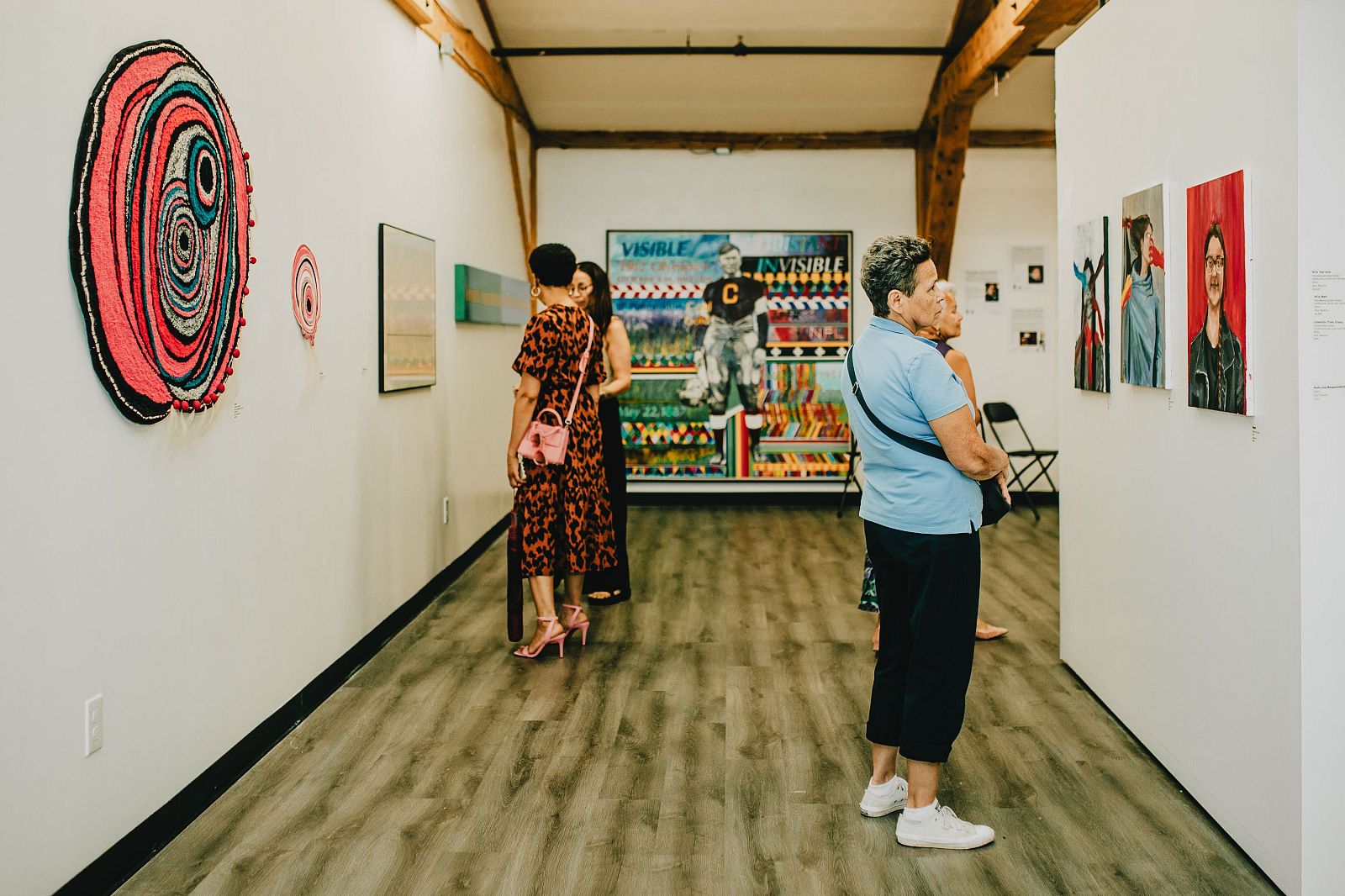
Attendees at the opening reception of Echoes and Shifts at Positive Street Art, Nashua, New Hampshire, 2024. Courtesy of Margaret Jacobs. (Photo: Esmeldy Angeles)
The exhibition, Echoes and Shifts, shows the work of ten Haudenosaunee artists, with substantial Akwesasronon representation. (The Haudenosaunee Confederacy is made up of the Mohawk, Oneida, Onondaga, Cayuga, Seneca and Tuscarora Nations and stretches mostly across what is now called New York State.) The artist representation centered the project in a significant way, as the show became directly connected with my homelands of Akwesasne but also included several artists from our Haudenosaunee relatives. This fit beautifully with the idea that had sparked my Fellowship research and we ended up with a web of kinship through direct familial connections, Tribal Nation relationships, and knowledge sharing through art practice and found community within the Granite State.
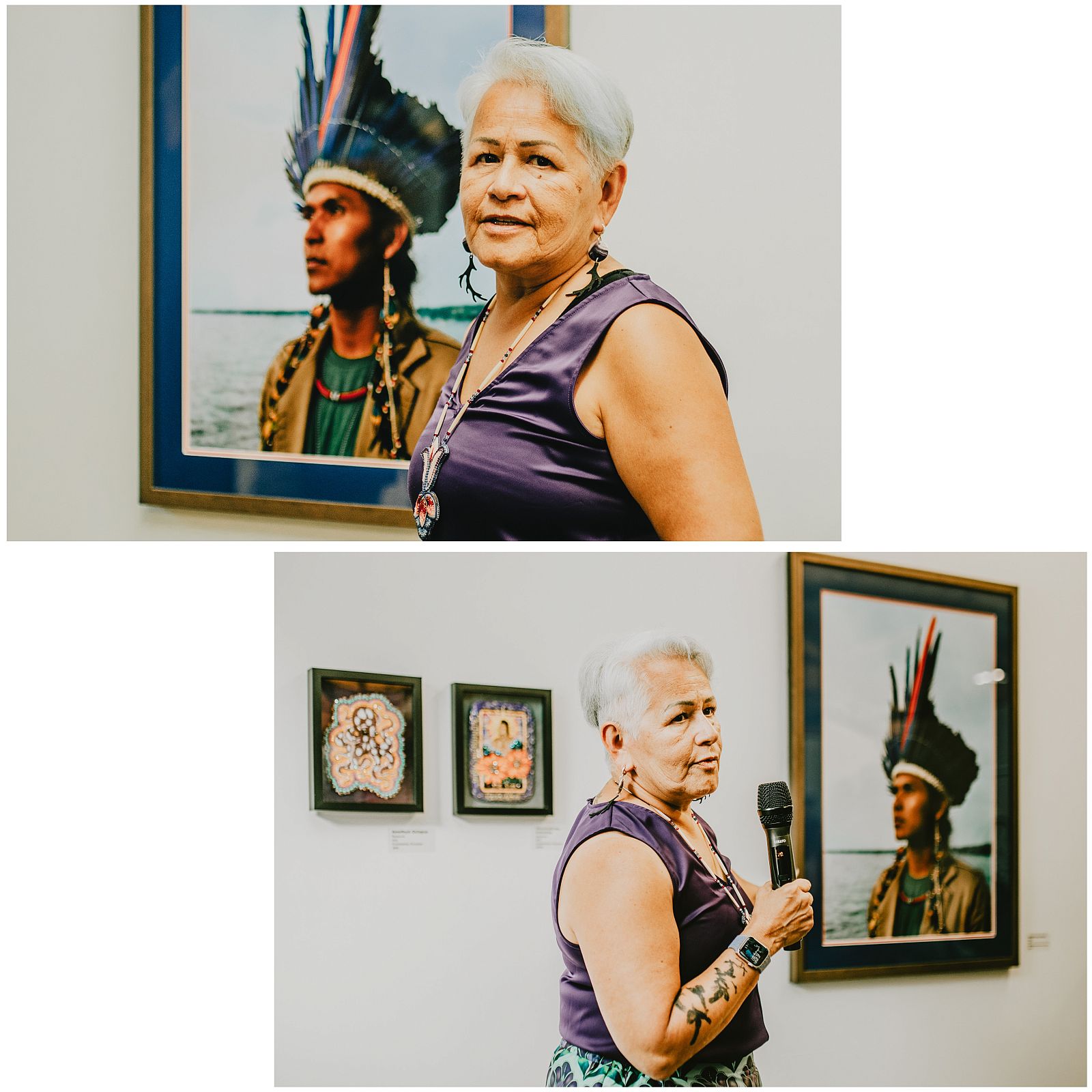
Marjorie Kaniehtonkie Skidders speaks about her work in front of her photograph, Aziel from Brazil, on view in Echoes and Shifts at Positive Street Art, Nashua, New Hampshire, 2024. Courtesy of Margaret Jacobs. (Photo: Esmeldy Angeles)
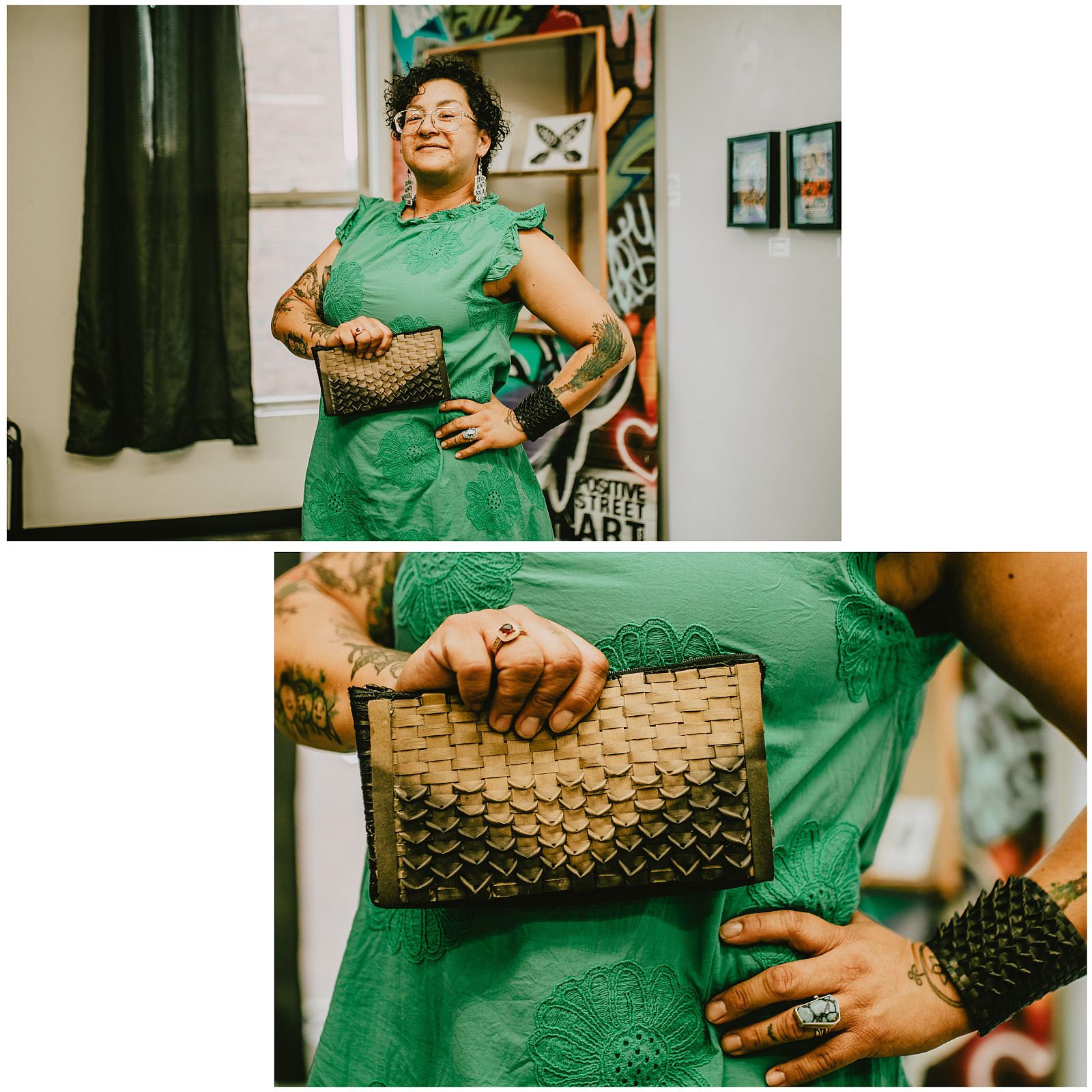
Master Basketmaker Carrie Hill poses with her woven black ash purse and cuff in Echoes and Shifts at Positive Street Art, Nashua, New Hampshire, 2024. Courtesy of Margaret Jacobs. (Photo: Esmeldy Angeles)
Echoes and Shifts is broad in its goals, ambitions, and underlying themes but remains focused on community. We seek to offer the youth and local residents more language and nuance with which to speak about the complexity and diversity within Indian Country; to provide insight into the breadth of artistic conversations happening in contemporary Native art; and to showcase the wealth of talent and artistry coming from Akwesasne. We aim to challenge stereotypes and dominant discourses around Indigenous art and creative practices in New England, and provide a platform for these creators to share their stories and perspectives that celebrate the diversity of Native artistic expression.
Margaret Jacobs (Akwesasne Mohawk) is an artist, independent curator, and educator currently based in Salem, New York.





